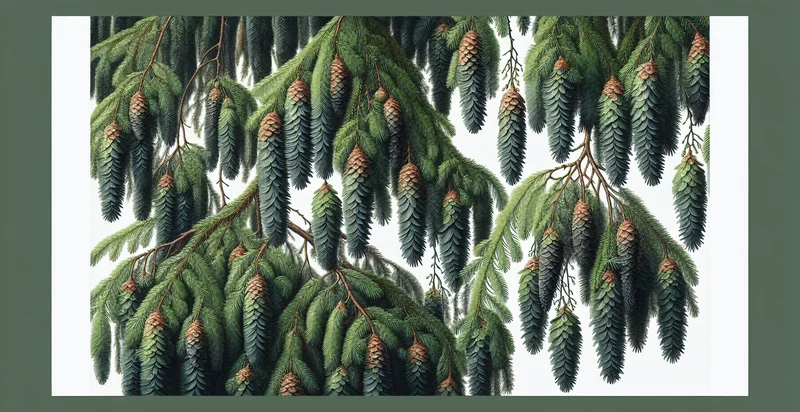Identify hemlock species
using AI
Below is a free classifier to identify hemlock species. Just upload your image, and our AI will predict what hemlock species it is - in just seconds.

Contact us for API access
Or, use Nyckel to build highly-accurate custom classifiers in just minutes. No PhD required.
Get started
import nyckel
credentials = nyckel.Credentials("YOUR_CLIENT_ID", "YOUR_CLIENT_SECRET")
nyckel.invoke("hemlock-species", "your_image_url", credentials)
fetch('https://www.nyckel.com/v1/functions/hemlock-species/invoke', {
method: 'POST',
headers: {
'Authorization': 'Bearer ' + 'YOUR_BEARER_TOKEN',
'Content-Type': 'application/json',
},
body: JSON.stringify(
{"data": "your_image_url"}
)
})
.then(response => response.json())
.then(data => console.log(data));
curl -X POST \
-H "Content-Type: application/json" \
-H "Authorization: Bearer YOUR_BEARER_TOKEN" \
-d '{"data": "your_image_url"}' \
https://www.nyckel.com/v1/functions/hemlock-species/invoke
How this classifier works
To start, upload your image. Our AI tool will then predict what hemlock species it is.
This pretrained image model uses a Nyckel-created dataset and has 10 labels, including Tsuga Canadensis, Tsuga Caroliniana, Tsuga Diversifolia, Tsuga Dumosa, Tsuga Heterophylla, Tsuga Japonica, Tsuga Mertensiana, Tsuga Orientalis, Tsuga Sieboldii and Tsuga Subarcornata.
We'll also show a confidence score (the higher the number, the more confident the AI model is around what hemlock species it is).
Whether you're just curious or building hemlock species detection into your application, we hope our classifier proves helpful.
Related Classifiers
Need to identify hemlock species at scale?
Get API or Zapier access to this classifier for free. It's perfect for:
- Environmental Monitoring: The hemlock species identifier can be employed by environmental agencies to monitor the presence of Hemlock trees in forests. This data can help track the health of ecosystems and identify areas affected by invasive species or diseases.
- Forestry Management: Forestry companies can use the identifier to ensure sustainable practices by accurately assessing Hemlock tree populations. This allows for better management of timber resources and helps protect the native species from overharvesting.
- Education and Awareness: Educational institutions can incorporate the hemlock species identifier in biology or ecology programs. This tool can aid students in understanding plant identification and promote awareness of plant diversity and conservation efforts.
- Conservation Efforts: Non-profit organizations focused on conservation can leverage the identifier to identify Hemlock species in specific habitats. This information can guide restoration projects by pinpointing areas that require protection and rehabilitation.
- Landscape Design: Landscape architects and designers can utilize the hemlock species identifier to select appropriate plant species for their projects. This ensures that native Hemlock species are used in landscaping, promoting biodiversity and ecological integrity.
- Agricultural Practices: Farmers and agricultural consultants can apply the identifier to manage Hemlock growth in agricultural settings. Proper identification can help prevent the disruption of local ecosystems while optimizing land use for crops and livestock.
- Research Applications: Academic researchers studying plant biology or ecology can use the hemlock species identifier to collect data for various studies. This tool can facilitate research on plant behavior, climate change impacts, and ecosystem dynamics involving Hemlock trees.


